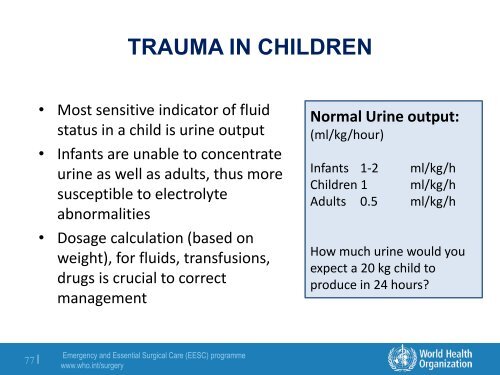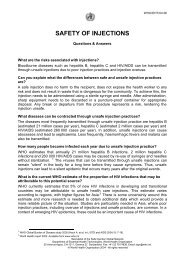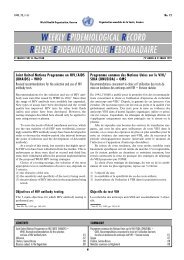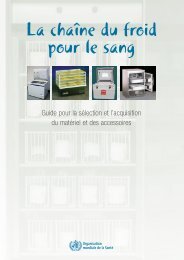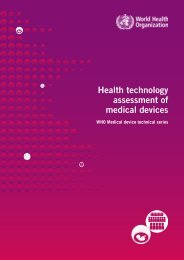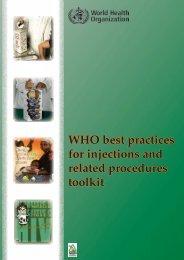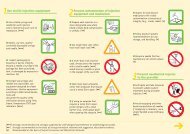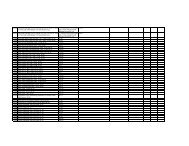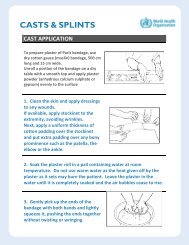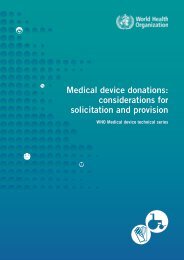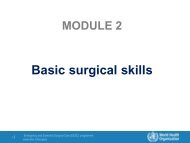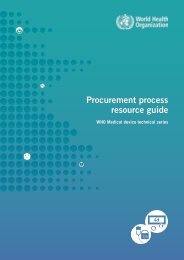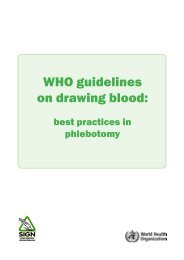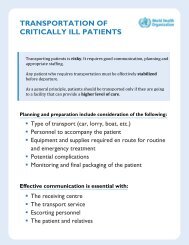Principles and Techniques of Trauma Care
Principles and Techniques of Trauma Care
Principles and Techniques of Trauma Care
You also want an ePaper? Increase the reach of your titles
YUMPU automatically turns print PDFs into web optimized ePapers that Google loves.
TRAUMA IN CHILDREN<br />
• Most sensitive indicator <strong>of</strong> fluid<br />
status in a child is urine output<br />
• Infants are unable to concentrate<br />
urine as well as adults, thus more<br />
susceptible to electrolyte<br />
abnormalities<br />
• Dosage calculation (based on<br />
weight), for fluids, transfusions,<br />
drugs is crucial to correct<br />
management<br />
Normal Urine output:<br />
(ml/kg/hour)<br />
Infants 1-2 ml/kg/h<br />
Children 1 ml/kg/h<br />
Adults 0.5 ml/kg/h<br />
How much urine would you<br />
expect a 20 kg child to<br />
produce in 24 hours<br />
77 |<br />
Emergency <strong>and</strong> Essential Surgical <strong>Care</strong> (EESC) programme<br />
www.who.int/surgery


